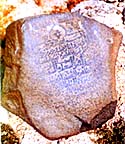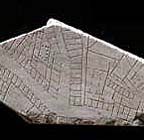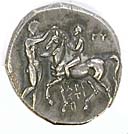 "University of Southampton archaeologists Professor David Peacock and Dr Lucy Blue have just returned from a pioneering expedition investigating Roman sites in the East African country of Eritrea alongside colleagues from the University of Asmara. The University group is the first from the UK to work in the country since it won its independence more than a decade ago.
"University of Southampton archaeologists Professor David Peacock and Dr Lucy Blue have just returned from a pioneering expedition investigating Roman sites in the East African country of Eritrea alongside colleagues from the University of Asmara. The University group is the first from the UK to work in the country since it won its independence more than a decade ago.
British involvement in the area has a long history. In 1868 General Napier landed his troops near Adulis in a daring bid to rescue British hostages held by Emperor Theodore at his fortress of Magdala, now in Ethiopia. Napier built a landing stage and a railway to transport troops and equipment to the interior, and traces still survive on the coast 6 km to the east of Adulis. Archaeologists from the British Museum, who accompanied the army, excavated a church at Adulis, which can still be seen in a ruinous state."
See also: Eritrea Ruins of History
 "It's the world's oldest and largest jigsaw puzzle - an ancient map of Rome in 1,200 fragments of marble. Archaeologists for centuries have tried to painstakingly piece together the sculpture, fragment by fragment. Now, computer wizards at Stanford University say they have created a software program that holds the key to the puzzle and the ancient city.
"It's the world's oldest and largest jigsaw puzzle - an ancient map of Rome in 1,200 fragments of marble. Archaeologists for centuries have tried to painstakingly piece together the sculpture, fragment by fragment. Now, computer wizards at Stanford University say they have created a software program that holds the key to the puzzle and the ancient city.
 "Yale University Art Gallery has acquired a collection of 4,100 coins of Greek and Roman origin. The collection was established over a period of forty years by Peter R. Franke, formerly Professor of Ancient History and Numismatics and head of the Institute for Ancient History at the University of Saarbrucken, Germany. Franke was mentor to many of the numismatists on staff at various collections throughout Europe, and taught until recently at the Institut fur Numismatik in Vienna. He is well-known as the author of a number of specialized monographs as well as introductory treatments of coinage. Although it covers the entire Mediterranean basin, the principal focus of the collection on Greek coins of the Roman period, which were produced at individual cities to meet local currency needs. "I am delighted that my collection has been acquired by Yale," said Professor Franke, "since I know that there the coins will be employed for teaching as well as research, and my work will be continued."
"Yale University Art Gallery has acquired a collection of 4,100 coins of Greek and Roman origin. The collection was established over a period of forty years by Peter R. Franke, formerly Professor of Ancient History and Numismatics and head of the Institute for Ancient History at the University of Saarbrucken, Germany. Franke was mentor to many of the numismatists on staff at various collections throughout Europe, and taught until recently at the Institut fur Numismatik in Vienna. He is well-known as the author of a number of specialized monographs as well as introductory treatments of coinage. Although it covers the entire Mediterranean basin, the principal focus of the collection on Greek coins of the Roman period, which were produced at individual cities to meet local currency needs. "I am delighted that my collection has been acquired by Yale," said Professor Franke, "since I know that there the coins will be employed for teaching as well as research, and my work will be continued."